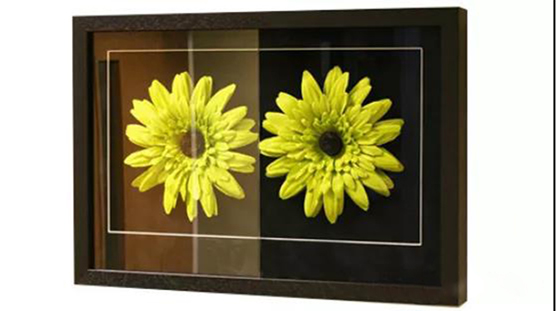3 main differences between Anti-Glare Glass and Anti-Reflective Glass
Many people can’t tell the difference between AG glass and AR glass and what’s the difference of the function between them. Following we will list 3 main differences:
Different performance
AG glass, the full name is anti-glare glass, also call as non-glare glass, which used to reduce strong light reflections or direct fire.
AR glass, the full name is anti-reflection glass, also known as low-reflective glass. It mainly use to de-reflection, increase transmission
Therefore, in terms of optical parameters, AR glass has more functions to increase the light transmission than AG glass.
Different processing method
AG glass production principle: After “coarse” the glass surface, the glass reflective surface (flat mirror) becomes a non-reflective matte surface (a rough surface with uneven bumps). Comparing it with ordinary glass with a lower reflectivity ratio, the reflectivity of light is reduced from 8% to less than 1%, using technology to create clear and transparent visual effects, so that the viewer can experience better sensory vision.
AR glass production principle: With the using of the world’s most advanced magnetically controlled sputter coating technology in the ordinary reinforced glass surface coated with a layer of anti-reflective film, effectively reduce the reflection of the glass itself, increase the glass penetration rate, so that the original through the glass more vivid color, more realistic.
Different environmental using
AG glass usage:
1. Strong light environment. If the use of the product environment has strong light or direct light, for example, outdoor, it is recommended to use AG glass, because AG processing makes the glass reflective surface into a matte diffuse surface. It can make the reflection effect blurred, prevent glare outside also make the reflectivity drop, and reduce light and shadow.
2. Harsh environment. In some special environment, such as hospitals, food processing, sun exposure, chemical plants, military, navigation and other fields, it requires the matte surface of the glass cover must not occur shedding cases.
3. Contact touch environment. Such as plasma TV, PTV back-drop TV, DLP TV splicing wall, touch screen, TV splicing wall, flat-screen TV, back-drop TV, LCD industrial instrumentation, mobile phones and advanced video frames and other fields.
AR glass usage:
1. HD display environment, such as the product usage requires a high degree of clarity, rich colors, clear levels, eye-catching; for example, watching TV want to see HD 4K, picture quality should be clear, color should be rich in color dynamics, reduce color loss or color difference…, the visible places such as museum display cabinets, displays, optical instruments in the field of telescopes, digital cameras, medical equipment, machine vision including image processing, optical imaging, sensors, analog and digital video technology, computer technology, etc.
2. AG glass manufacturing process requirements very high and strict, there are only few companies in China can proceed AG glass production, especially glass with acid etching technology is quite less. Presently, in large-size AG glass manufacturers, only Saida Glass can reach 108 inches of AG glass, mainly because it is the use of self-developed “horizontal acid etching process”, can ensure the uniformity of AG glass surface, no water shadow, product quality is higher. At present, the vast majority of domestic manufacturers are vertical or tilted production, size amplification of product disadvantages will be exposed.
